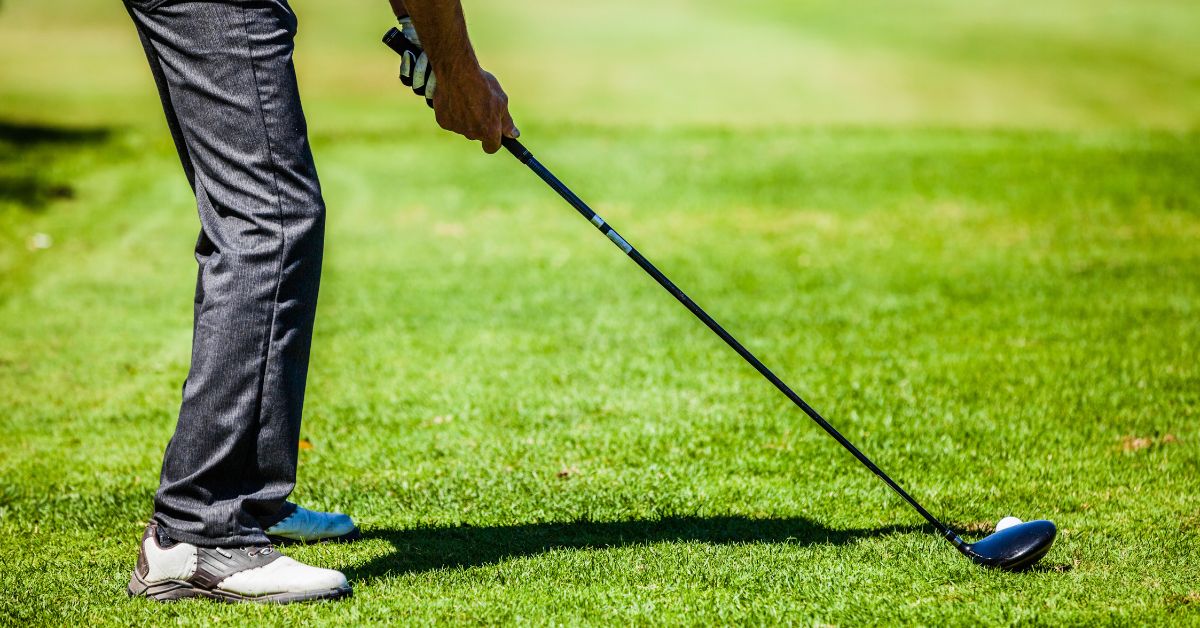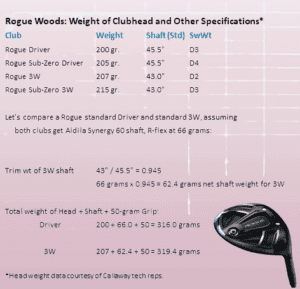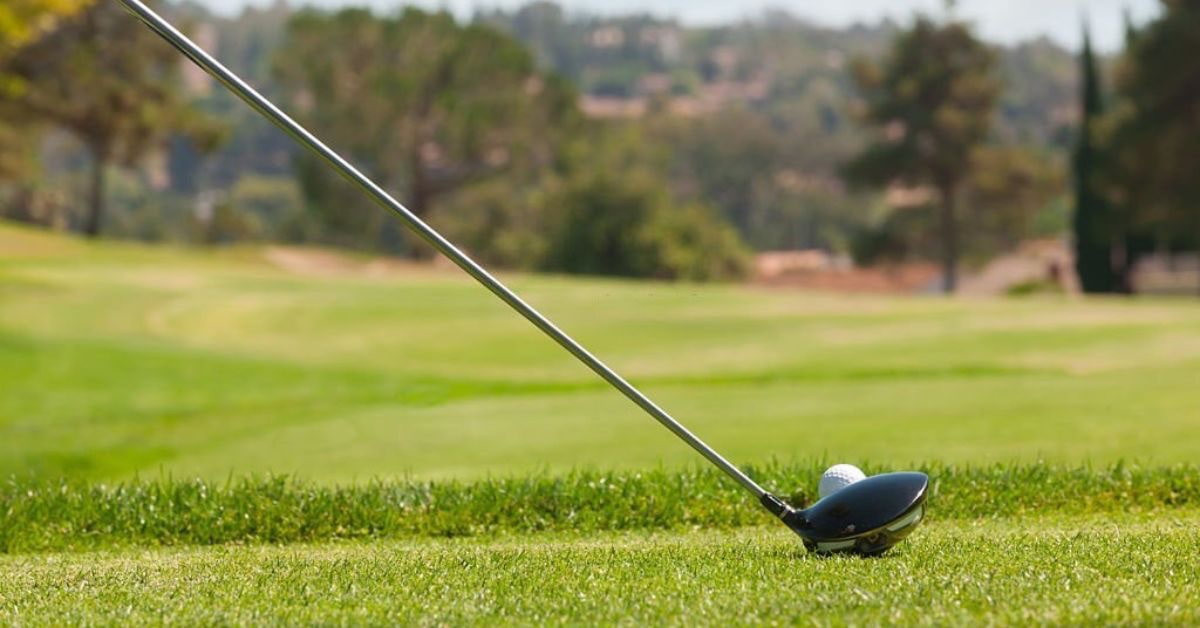Hey, have you ever wondered if it’s possible to use a 3 wood shaft in a driver? Well, you’re in luck because today we’re going to tackle this intriguing question. We’ll explore whether swapping out the shafts between these two clubs is a viable option and what potential advantages or limitations it may have. So, grab your club and let’s dig into the fascinating world of golf shafts!
Can a 3-wood Shaft Be Used in a Driver?
Understanding Golf Club Shafts
Golf club shafts play a crucial role in determining the performance of a club. They are responsible for transmitting the energy from your swing to the clubhead, ultimately impacting the distance, accuracy, and trajectory of your shots. Understanding the characteristics and differences between various shafts is essential when considering whether a 3 wood shaft can be used in a driver.
Key Differences Between 3 Wood and Driver Shafts
The primary differences between 3 wood and driver shafts lie in their length, flexibility, weight, balance, tip and butt diameter, kick point, and materials used in their construction.
A 3 wood shaft is typically shorter and more flexible compared to a driver shaft. It allows for better control and accuracy in the fairway, where precision is crucial. On the other hand, a driver shaft is longer and stiffer to maximize power and distance off the tee. It is designed to provide more leverage and generate higher swing speeds.
Weight and balance also differ between these two shaft types. Driver shafts are generally lighter to enhance swing speed, while 3 wood shafts tend to be slightly heavier to provide better control and a smoother feel.
The tip and butt diameter of the shafts also vary, as drivers have larger diameters compared to 3 woods. This difference affects the shaft’s torsional stability and impacts the clubhead’s ability to square at impact.
Kick point, or flex point, is another crucial factor. It refers to the point along the shaft where it bends the most during the swing. Drivers typically have a higher kick point to lower launch angles and reduce spin, while 3 woods have a lower kick point for higher launch.
Lastly, the materials used in shaft construction may differ. While both shafts can be made from graphite or steel, manufacturers may choose different compositions to achieve different performance characteristics.
What Happens When You Put a 3-Wood Shaft in a Driver?
Exploring the effects of using a 3 wood shaft in a driver
When you put a 3-wood shaft in a driver, several things can happen. Firstly, you may see a change in the ball flight and trajectory. The 3-wood shaft is typically shorter and stiffer than a driver shaft. This can result in lower launch angles and reduced spin, which could lead to more distance but less forgiveness on off-center hits.
Moreover, the change in shaft length can affect the swing weight and overall feel of the club. The shorter shaft may make the club feel lighter and easier to control, but it can also reduce the potential for maximum clubhead speed. It’s important to note that these effects can vary depending on your swing speed, swing mechanics, and other factors.
Comparing the lengths of driver shafts and 3 wood shafts
To understand the impact of using a 3-wood shaft in a driver, let’s compare the lengths of these two types of shafts. A standard driver shaft typically measures around 45 inches, while a 3-wood shaft is usually 42 to 43 inches in length. This shorter length can make it easier to find the center of the clubface and may improve accuracy.
However, it’s essential to consider the clubhead design and loft when making such modifications. Drivers are designed to optimize distance off the tee, with features like larger clubheads and adjustable loft settings. On the other hand, 3-woods are typically used for fairway shots and require more control and accuracy.
In conclusion, putting a 3-wood shaft in a driver can have an impact on ball flight, trajectory, control, and overall feel. Whether this modification is beneficial for you depends on your swing characteristics, preferences, and the specific goals you have for your game. It’s always a good idea to consult with a club fitting specialist or golf professional to determine the best setup for your needs.
Benefits and Drawbacks of Using a 3 Wood Shaft in a Driver
Using a 3 wood shaft in a driver comes with its share of benefits and drawbacks. Let’s explore both.
Potential Benefits of Using a 3 Wood Shaft in a Driver
- Improved Accuracy: The increased flex and shorter length of a 3 wood shaft can enhance accuracy and control, especially if you struggle with hitting your driver consistently.
- Smoother Swing: The slightly heavier weight of a 3 wood shaft can promote a smoother swing tempo, resulting in better rhythm and timing.
- Better Fairway Performance: If you primarily use your driver on the fairway, a 3 wood shaft may provide better distance and control for those shots.
Possible Drawbacks of Using a 3 Wood Shaft in a Driver
- Reduced Distance Potential: The shorter length and increased flex of a 3 wood shaft can lead to decreased distance off the tee compared to a dedicated driver shaft.
- Limited Adaptability: Using a 3 wood shaft in a driver may limit your ability to fine-tune the club to your desired shot shape, launch angle, or spin rate.
Effect on Distance and Accuracy

Impact on Distance Potential with a 3 Wood Shaft in a Driver
Using a 3 wood shaft in a driver can potentially impact distance. The shorter length and increased flex of the 3 wood shaft may result in reduced clubhead speed, translating to decreased distance off the tee. However, this can vary depending on an individual’s swing characteristics and preferences.
Effect on Accuracy and Forgiveness
Swapping the driver shaft for a 3 wood shaft may improve accuracy for some golfers. The increased flex and shorter length of the 3 wood shaft can provide better control and accuracy, allowing you to find the fairway more consistently. Additionally, the heavier weight can promote a smoother swing, enhancing your ability to strike the ball cleanly. However, it’s important to note that the forgiveness of a driver may be compromised when using a 3 wood shaft.
Effect on Trajectory and Ball Flight
Changes in Trajectory when Using a 3-Wood Shaft in a Driver
Using a 3 wood shaft in a driver can result in substantial changes in trajectory. The lower kick point of a 3 wood shaft promotes a higher launch angle compared to a driver shaft. This increase in launch may cause the ball to climb quickly off the tee and achieve a higher peak height. If you prefer a higher ball flight, using a 3 wood shaft in your driver might be beneficial.
Influence on Ball Flight Characteristics
The combination of a 3 wood shaft and driver clubhead may produce unique ball flight characteristics. The lower kick point and increased flex can lead to more spin and a higher ball flight. This can be advantageous in certain situations, such as when trying to carry hazards or hit soft-landing approach shots. However, it’s important to consider the effect of these changes on your overall game and shot shaping capabilities.
Influence on Swing Speed and Tempo
Effects on Swing Speed when Utilizing a 3 Wood Shaft in a Driver
Swing speed may be impacted when using a 3 wood shaft in a driver. The slightly heavier weight of the 3 wood shaft can potentially reduce swing speed compared to a dedicated driver shaft. However, the effect on swing speed varies from golfer to golfer, as individual swing mechanics and preferences play a significant role.
Impact on Swing Tempo and Rhythm
The increased weight of a 3 wood shaft may influence swing tempo and rhythm positively. The additional weight can provide a smoother feel throughout the swing, promoting better timing and tempo. This can be particularly beneficial for golfers who struggle with a quick or jerky tempo.

Compatibility Considerations
Compatibility of Club Heads and Shaft Tip Diameter
When considering using a 3 wood shaft in a driver, it’s crucial to ensure compatibility between the clubhead and shaft tip diameter. If the tip diameter of the 3 wood shaft does not match the hosel of the driver, it may require adjustments or the use of hosel adapters to achieve a proper fit. Consulting with a professional clubfitter can provide valuable insights and guidance in this regard.
Hosel Adapters and Adjustability Options
Modern driver designs often feature hosel adapters that allow for fine-tuning of loft, lie angle, and face angle. Utilizing a 3 wood shaft may limit the adjustability options provided by these hosel adapters. It’s important to consider whether the desired adjustability can still be achieved when using a 3 wood shaft.
Adjustments Needed for Using a 3 Wood Shaft in a Driver
Potential Modifications to Loft and Lie Angles
When using a 3 wood shaft in a driver, you may need to make adjustments to loft and lie angles to optimize performance. The dynamic characteristics of a 3 wood shaft can influence the launch and spin characteristics of the driver. A professional club fitting can help determine the appropriate modifications needed for your specific needs and preferences.
Grip Considerations
Swapping the shaft in your driver requires careful consideration of grip compatibility. The diameter and texture of the grip should be suitable for the 3 wood shaft. Additionally, you may need to account for potential changes in swing weight due to the differences in shaft weight.
Professional Clubfitting Recommendations
To ensure the best possible fit and performance, it is highly recommended to consult with a professional clubfitter when considering using a 3 wood shaft in a driver. A clubfitter can accurately assess your swing characteristics, make necessary adaptations, and provide expert recommendations based on your individual needs.
Professional Golfer Perspectives
Professional golfers often have access to extensive club fitting and customization options. While some professionals may experiment with using a 3 wood shaft in a driver, it is generally less common at the highest levels of the game. Many professionals prefer to have separate shafts specifically tailored for their driver and 3 wood to optimize performance.
Case Study: Testing the 3 Wood Shaft in a Driver

Examining the results of a comparison between a 3-wood shaft and a driver shaft
If you’re curious about the impact of using a 3 wood shaft in a driver, we have some insights from a recent case study. The aim was to examine the differences between using a typical driver shaft and a 3 wood shaft in a driver’s head.
During the study, a variety of shots were hit using a Ping G400 driver head with both a driver shaft and a 3 wood shaft. The shots were analyzed based on key factors such as launch angle, spin rate, distance, and accuracy.
The results showcased some interesting findings. When using the 3 wood shaft, players experienced a slightly lower launch angle compared to the driver shaft. This can lead to a more penetrating ball flight that may be beneficial in certain conditions, such as when faced with strong winds.
Additionally, the 3 wood shaft resulted in a lower spin rate, which can lead to increased roll and extra distance off the tee. This could be advantageous if you’re looking to maximize your driving distance.
Furthermore, the accuracy of shots with the 3 wood shaft was comparable to those with the driver shaft. So, there was no significant compromise in terms of accuracy when using the 3 wood shaft.
However, it’s important to note that individual results can vary, and personal preference also plays a role. It’s recommended to experiment with different shaft options and conduct your own testing to determine the best fit for your game.
Insights from testing with the Ping G400 driver head
In conclusion, the case study showed that using a 3 wood shaft in a driver can have its advantages. It can result in a lower launch angle, lower spin rate, and potentially more distance off the tee. The accuracy was also comparable to shots with a driver shaft.
If you’re considering trying out a 3 wood shaft in your driver, it’s crucial to consult with a professional club fitter to ensure you find the right combination that suits your swing characteristics and goals on the course.
Remember, golf equipment is highly personal, and what works for one player may not work for another. So, take the time to experiment and find the optimal setup that helps you perform your best off the tee.
Are 3 Wood Shafts the Same as Driver Shafts?
When it comes to golf equipment, specifically the shafts used in drivers and 3 woods, there are both similarities and differences to consider.
The main similarity between 3 wood shafts and driver shafts is that they are both designed to propel the ball down the fairway. However, there are some key differences between the two that golfers should be aware of.
Firstly, the length of the shafts can vary. Driver shafts are typically longer, ranging from 44 to 48 inches, while 3 wood shafts are slightly shorter, usually measuring between 42 and 43 inches. This difference in length can affect the swing dynamics and distance potential of each club.
Another difference to consider is the flex of the shafts. 3 wood shafts are generally stiffer compared to driver shafts. This is because a stiffer shaft helps to control the trajectory and accuracy of shots with a 3 wood, which is typically used for approach shots and hitting off the fairway. On the other hand, driver shafts are often more flexible to maximize distance off the tee.
Factors to consider when choosing a shaft for your driver
When selecting a shaft for your driver, there are a few key factors to keep in mind:
- Flexibility: Choose a shaft flex that matches your swing speed and style. If you have a fast swing speed, a stiffer shaft might be more suitable. Conversely, a slower swing speed might benefit from a more flexible shaft.
- Weight: The weight of the shaft can impact your swing and ball flight. Heavier shafts offer more control but can sacrifice distance, while lighter shafts can increase distance but may reduce accuracy.
- Materials: Driver shafts can be made from various materials, including graphite and steel. Graphite shafts are lighter and more flexible, while steel shafts are often stiffer and provide better control.
In conclusion, while 3 wood shafts and driver shafts share similarities in their function, there are important differences that can affect club performance. Understanding these differences and considering factors like length, flex, weight, and material can help you choose the right driver shaft for your game.
Conclusion
In conclusion, using a 3 wood shaft in a driver can present both advantages and disadvantages. It may improve accuracy, provide a smoother swing, and offer better fairway performance. However, it may also result in decreased distance potential and limit adjustability options. The impact on trajectory, ball flight, swing speed, and compatibility should be carefully considered before making any changes. Consulting with a professional clubfitter is highly recommended to ensure the best fit and performance for your game.


I’m Donna Weiss, and I am the proud writer behind the captivating content you’ll find on golfneedy.com. As an avid golfer and passionate writer, I have combined my two greatest passions to bring you an incredible golfing experience. Through my articles, I aim to provide you with valuable insights, equipment reviews, and updates on the latest tournaments. Whether you’re a seasoned golfer or just starting out on this exciting journey, I am here to guide you and share my expertise. Together, let’s explore the fascinating world of golf, uncovering new techniques, and enhancing our skills. Join me on this thrilling adventure as we elevate our game and embark on an exciting golfing journey. Read More



